The freestanding tub has become synonymous with luxury, relaxation, and high-end bathroom design. Unlike built-in tubs confined by walls or surrounds, a freestanding bathtub stands alone as a sculptural object, instantly elevating the space and creating a stunning focal point. In modern bathrooms, where clean lines and thoughtful design reign supreme, the freestanding tub offers a perfect blend of spa-like indulgence and contemporary style. As we move through 2025, several key trends are shaping the shapes, materials, colors, and features of these desirable fixtures.
Why Freestanding Tubs in Modern Bathrooms? (The Appeal)
Their enduring popularity in modern design stems from several factors:
- Sculptural Focal Point: A beautifully designed freestanding tub commands attention and acts as the centerpiece of the bathroom.
- Luxury & Spa-Like Feel: More than just a place to bathe, it evokes a sense of indulgence, relaxation, and personal retreat.
- Design Flexibility: Offers more placement options than built-in tubs (space permitting), allowing for creative layouts. It can be positioned under a window, against a feature wall, or even within a larger wet room area.
- Showcases Flooring: Allows beautiful bathroom flooring materials to flow uninterrupted around the base of the tub.
- Variety of Modern Styles: Designs have evolved far beyond classic claw-foot tubs (though modern interpretations exist) to encompass sleek, minimalist forms perfect for contemporary aesthetics.
Freestanding Tub Trends (as of May 2025)
Here’s what’s trending in the world of modern freestanding tubs:
1. Shapes & Forms: Simplicity and Sculptural Interest
- Minimalist Ovals: Soft, organic oval shapes remain a timeless and popular choice. They provide a gentle contrast to the often linear nature of modern design and offer comfortable soaking.
- Clean Rectangular & Geometric: Tubs with sharp, clean rectangular lines or subtle geometric facets align perfectly with minimalist and architectural modern styles.
- Organic & Asymmetrical Shapes: Moving beyond perfect symmetry, some trending tubs feature softer, more fluid, or subtly asymmetrical lines, enhancing their sculptural quality.
- Modern Slipper Tubs: Contemporary takes on the classic high-backed slipper shape (single or double-ended) feature cleaner lines and simpler bases, blending vintage comfort with modern style.
2. Materials & Finishes: Matte is Major
- Acrylic: Still a very popular choice due to being lightweight, relatively affordable, non-porous, easy to clean, and good at retaining heat. Available in countless shapes, usually with a glossy white finish.
- Solid Surface: Gaining significant traction for its modern appeal. Offers a seamless, often matte or satin finish, feels warm to the touch, retains heat well, and minor scratches can often be buffed out. Allows for very clean lines and unique integrated overflow designs. Heavier and pricier than acrylic.
- Stone Resin / Composite: A high-end option blending crushed natural minerals (like quartz or limestone) with resin. Offers the substantial feel and look of stone (often in a matte finish), excellent durability, and great heat retention. Very heavy.
- Cast Iron: The traditional heavyweight, known for extreme durability and superior heat retention. Modern cast iron tubs feature updated shapes and often have enameled interiors (usually white) with potentially colored exteriors.
3. Color Trends: Beyond Basic White
- Matte White: While glossy white remains classic, matte white is arguably the leading trend for a softer, more contemporary, and sophisticated look, especially in solid surface and stone resin materials.
- Statement Black: Often in a matte finish, black freestanding tubs create a dramatic, high-contrast focal point that exudes modern luxury.
- Two-Tone: Tubs featuring one color on the exterior (often black, gray, or a deep hue) and a white interior are increasingly popular for adding visual interest.
- Subtle Neutrals: Soft grays, concrete-look finishes, and muted beige tones are emerging as sophisticated alternatives to stark white or black.
4. Size & Depth: Focus on Soaking
- Deeper Designs: The trend continues towards tubs designed for a true, comfortable soaking experience, often featuring deeper dimensions and ergonomic interior slopes.
- Compact Footprints: Recognizing that not all bathrooms are palatial, manufacturers are offering more stylish freestanding options with smaller overall dimensions suitable for tighter spaces, without sacrificing too much internal soaking depth.
5. Faucet Pairing (Tub Fillers): Clean and Considered
The faucet pairing completes the look.
- Floor-Mounted Tub Fillers: The most common choice for freestanding tubs placed away from walls. These tall, elegant fixtures rise from the floor and often include a handheld shower wand. Available in minimalist modern designs and various finishes. Require plumbing to come up through the floor.
- Wall-Mounted Tub Fillers: Offer a very clean, built-in look when the tub is placed near a wall. Requires plumbing within the wall at the correct height and projection.
- Deck-Mounted Faucets: Less common for true freestanding tubs unless the tub has a wide rim (a “deck”) designed to accommodate faucet holes. Modern versions are typically sleek and minimalist.
Placement Considerations
- Focal Point: Position the tub where it draws the eye – centered under a window, against a beautiful tile or stone feature wall.
- Space: Ensure adequate clearance (at least 6 inches, often more recommended) around the tub for cleaning access and visual balance. Don’t cram it into a tight corner if it compromises the freestanding look.
- Plumbing: The location of your existing or planned plumbing will heavily influence placement options, especially for floor-mounted fillers. Plan this early in the design process.
- Weight: Consider the weight of the tub, especially heavier materials like cast iron or stone resin, plus the weight of the water, and ensure your floor structure can support it.
Conclusion
Freestanding tubs continue to reign as a coveted feature in modern bathroom design, embodying luxury, relaxation, and sophisticated style. Trends in 2025 favor minimalist shapes like ovals and rectangles, tactile matte finishes in white or bold black offered by solid surface and stone resin materials, and deeper profiles for a true soaking experience. Paired with sleek floor-mounted or wall-mounted fillers and thoughtfully placed within the space, a freestanding tub transforms a bathroom from purely functional into a personalized retreat and a stunning design statement.

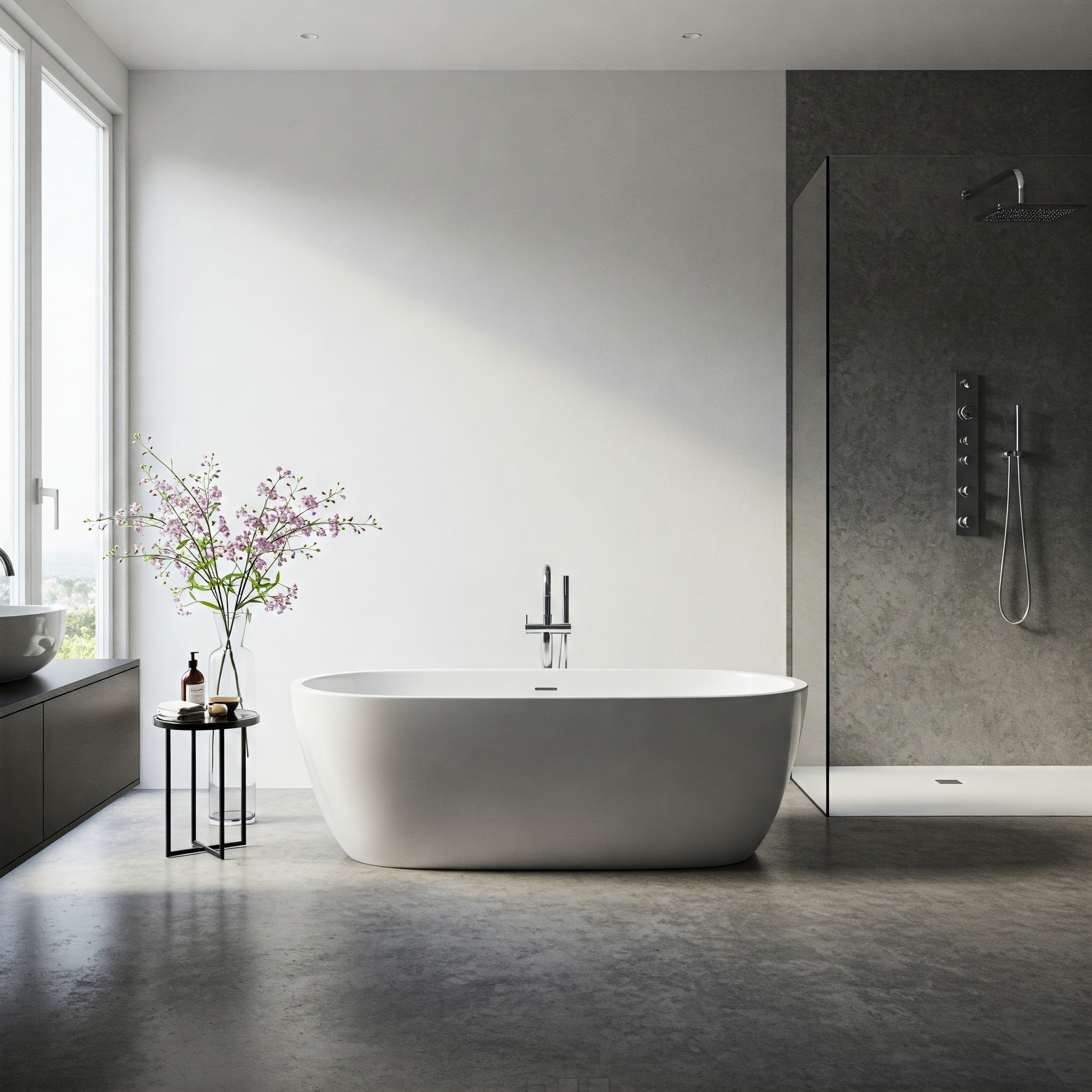
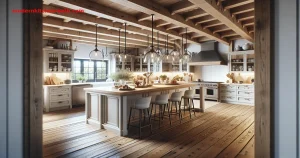
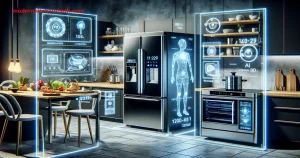
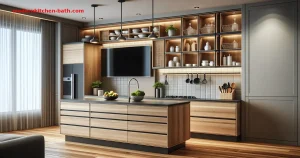
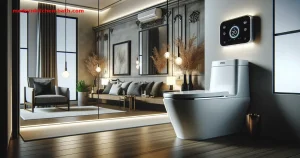
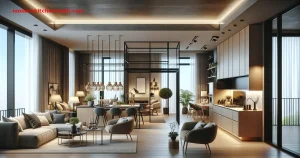
Leave a Comment